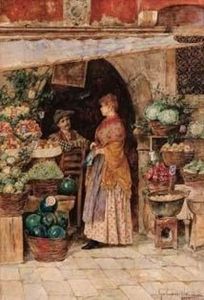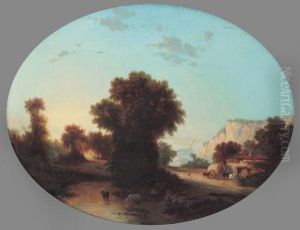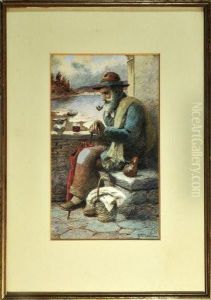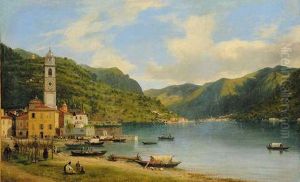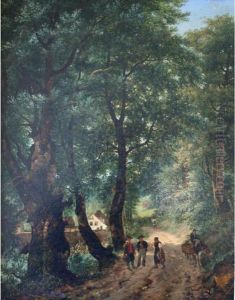Giuseppe Ii Canella Paintings
Giuseppe II Canella, born in 1788 in Verona, Italy, was a prolific artist known for his landscape paintings. Canella's artistic journey began under the guidance of his father, Giovanni, an architect and set designer. This early exposure to architectural principles and theatrical scenery profoundly influenced Canella's approach to composition and perspective in his landscapes.
After starting his career painting theatrical scenery, Canella shifted his focus to capturing the beauty of natural and urban landscapes. His paintings often depicted the Italian countryside, including the regions of Veneto, where he was born, and Lombardy, where he spent a significant part of his life. Canella's works were characterized by their attention to detail, vibrant colors, and the ability to convey the atmosphere of the places he painted.
Giuseppe II Canella traveled extensively throughout Italy, often on commissions to create views of cities and towns. His journeys allowed him to gather a wide range of subjects for his canvases, from the bustling streets of major cities to the serene vistas of the Italian lakes. In the 1820s, Canella moved to Milan, which became a pivotal point in his career. There, he was exposed to a burgeoning art scene and the works of other landscape painters, which further influenced his style and technique.
Canella's landscapes were well-received during his lifetime, and he garnered the patronage of important figures, which provided him with a steady stream of commissions. His works were not only popular in Italy but also gained recognition abroad. He exhibited his paintings in various cities, including Milan, where he participated in the Brera exhibitions, which were critically acclaimed.
Sadly, Giuseppe II Canella's life and career were cut short when he died in 1847. Despite his relatively short life, Canella left behind a substantial body of work that has continued to be appreciated for its contribution to the landscape genre. His paintings are housed in numerous public and private collections, serving as a testament to his skill and dedication to capturing the beauty of the Italian landscape.

